SCORPIUS
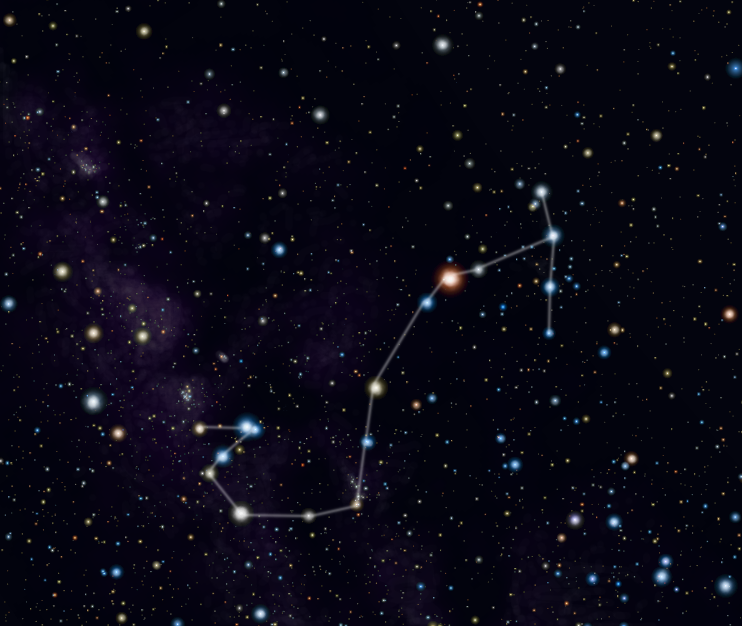
Till Credner - Own work, AlltheSky.com,
CC BY-SA 3.0, wikimedia
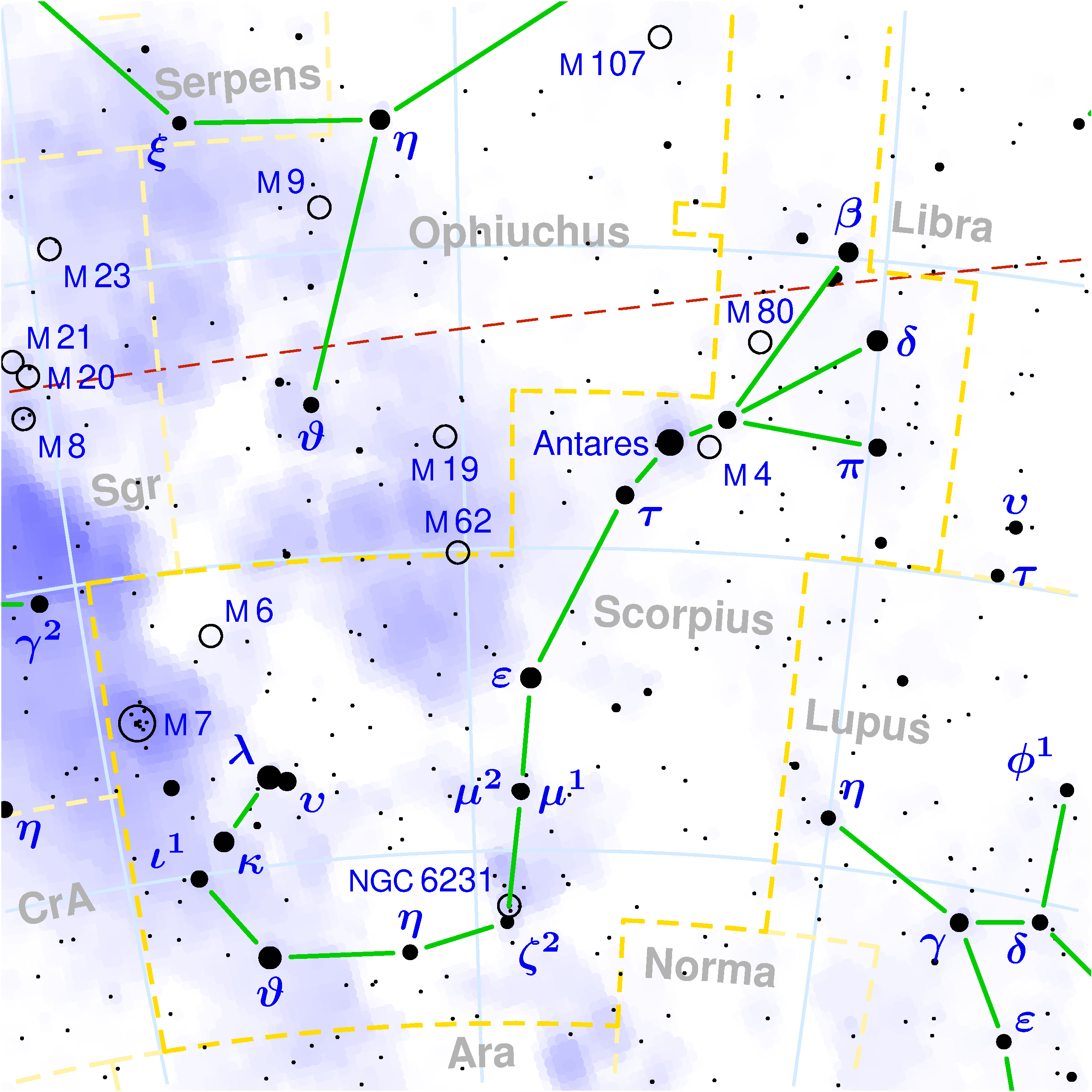
Torsten Bronger - Own work: It was created by Torsten Bronger using the program PP3 on 2003/08/18.
At PP3's homepage, you also get the input scripts necessary for re-compiling the map.
CC BY-SA 3.0, wikimedia
Scorpius is the most spectacular constellation in the sky, especially when it is seen at the southern horizon at a latitude under 43° N. Its distinct shape with its raised tail ready to strike, its red star Antares and its location near the Milky Way all these features make the constellation one of the most distinctive. It was an even larger constellation in antiquity when the brightest stars of Libra were the claws of the arachnid.
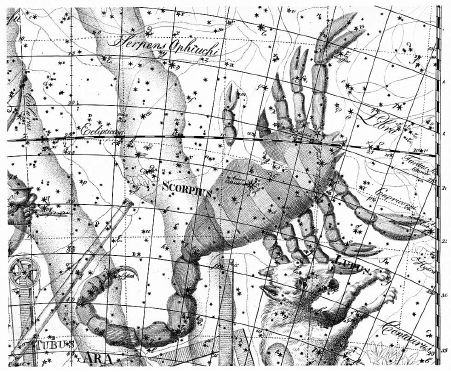
Jacopo Montano - Uranographia, Johann Bode.
CC BY-SA 3.0, wikimedia
In Greek mythology, the myths associated with Scorpio almost invariably contain a reference to Orion. In fact, Scorpius killed the warrior Orion when he came out of a crack in the ground and stung the unsuspecting warrior on the foot. Zeus put them at opposite ends of the skies, when one rises, the other falls. This way they will never meet again.
Shaula, the lambda star, is the second brightest star in the constellation. It marks the tip of the scorpion’s curved tail, a role it shares with the dimmer Lesath. It is a triple star and is found at less than 400 light-years from the Solar System.
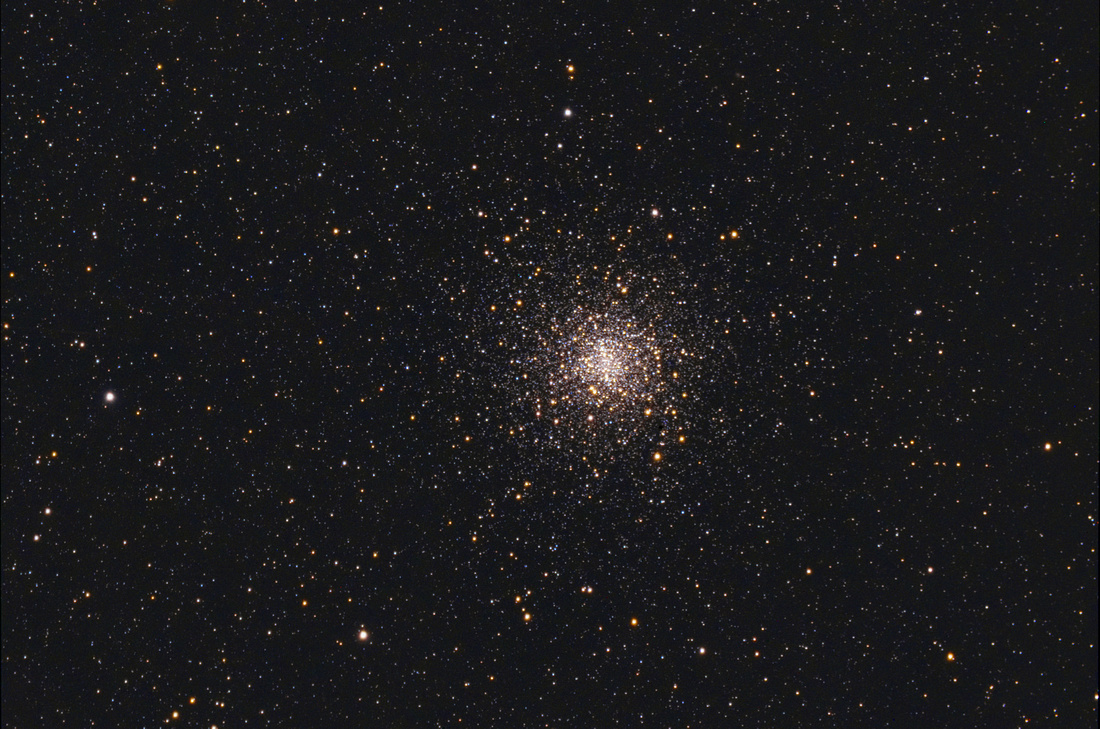
Di Hewholooks - Own work,
CC BY 3.0, wikimedia
Scorpius is rich in interesting objects. A little more than 1.0° west of Antares is M4 the globular cluster closest to the Solar System at a little more than 6,000 light-years from us. Its position allowed Messier to resolve individual stars with a modest telescope. It was the fourth item on his list of objects he catalogued. A planet has been discovered inside it. It is called Matusalemme for its venerable age of 13 billion years.
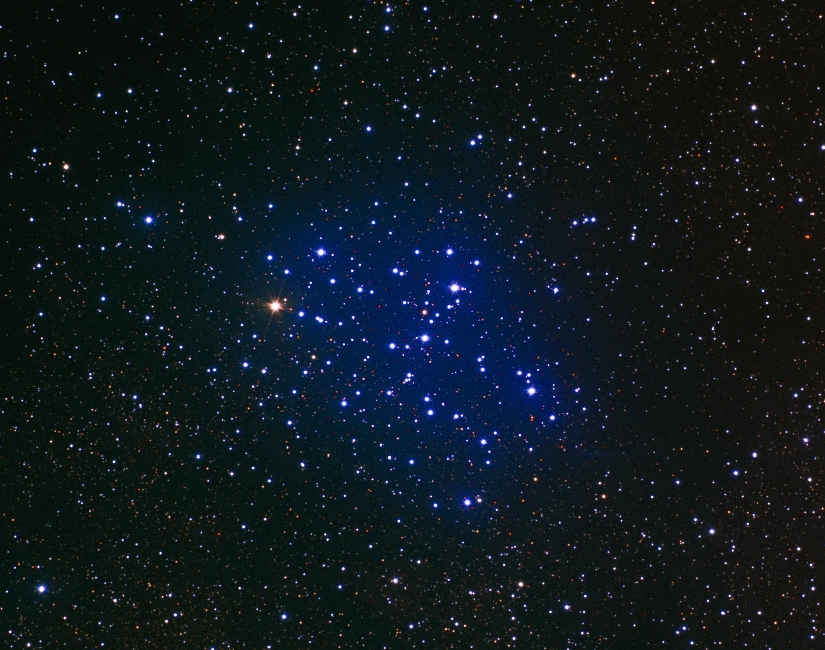
wikimedia
M6 is an open cluster which is found just above the tip of the tail. It is called the Butterfly cluster. In fact, with a good pair of binoculars you can make out the form of a small butterfly with its antennae, wings and abdomen. It is about 2,000 light-years from us.
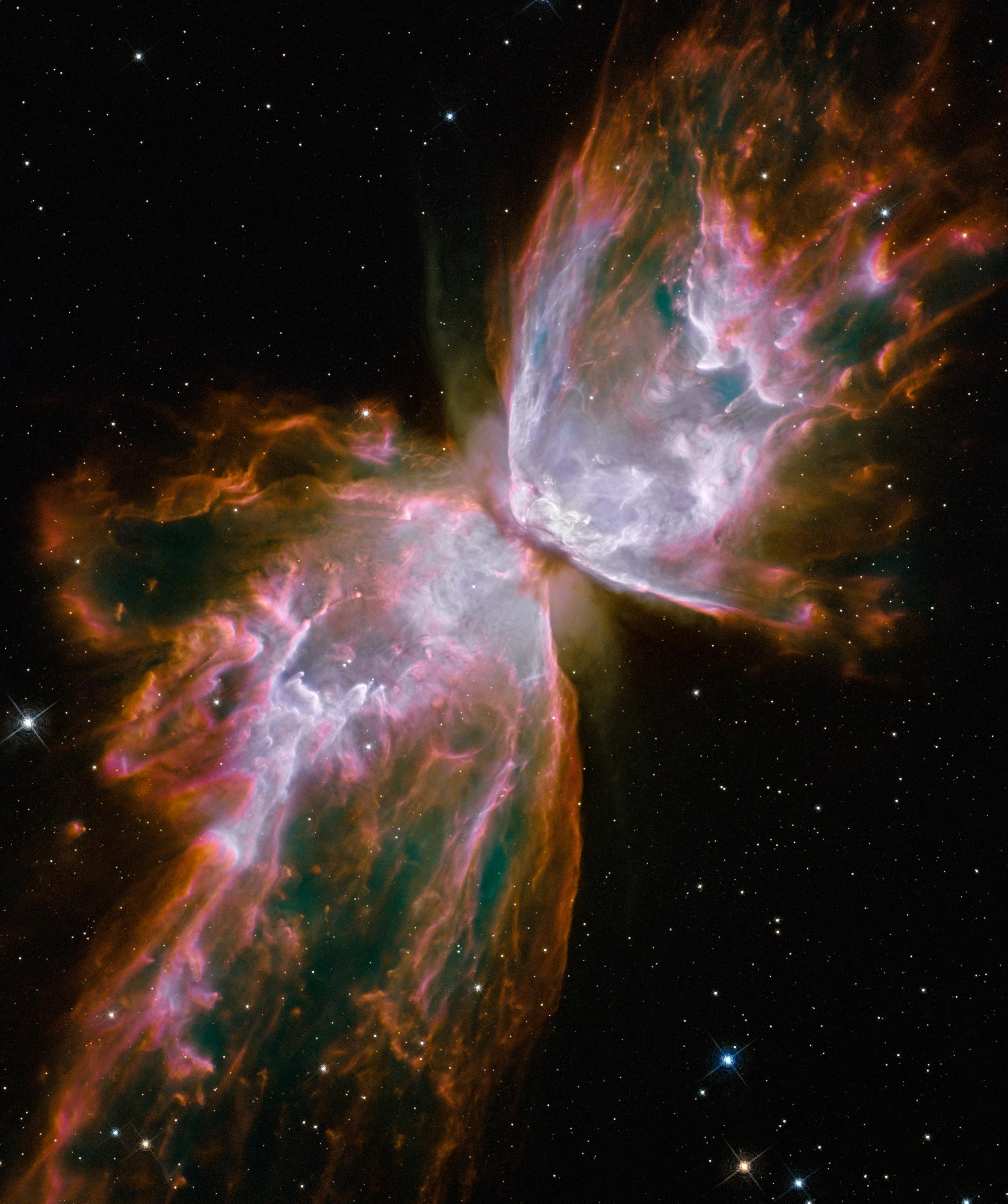
Di NASA, ESA, and the Hubble SM4 ERO Team - nasa.gov,
Public domain, wikimedia
NGC 6302 is the called the Bug Nebula and is located just west of the tip of the tail. It is a planetary nebula. The photograph taken of the nebula by the Hubble Space Telescope is spectacular. The central star is one of the hottest that we know of, it has a surface temperature of about 200,000°C! It is located 3,400 light-years from us and has a diameter of 3 light-years.
Southern Hemisphere: Scorpius is visible from April to October. At the southern middle latitudes, at the end of July right after sunset, we find it just under the zenith on the southern horizon.